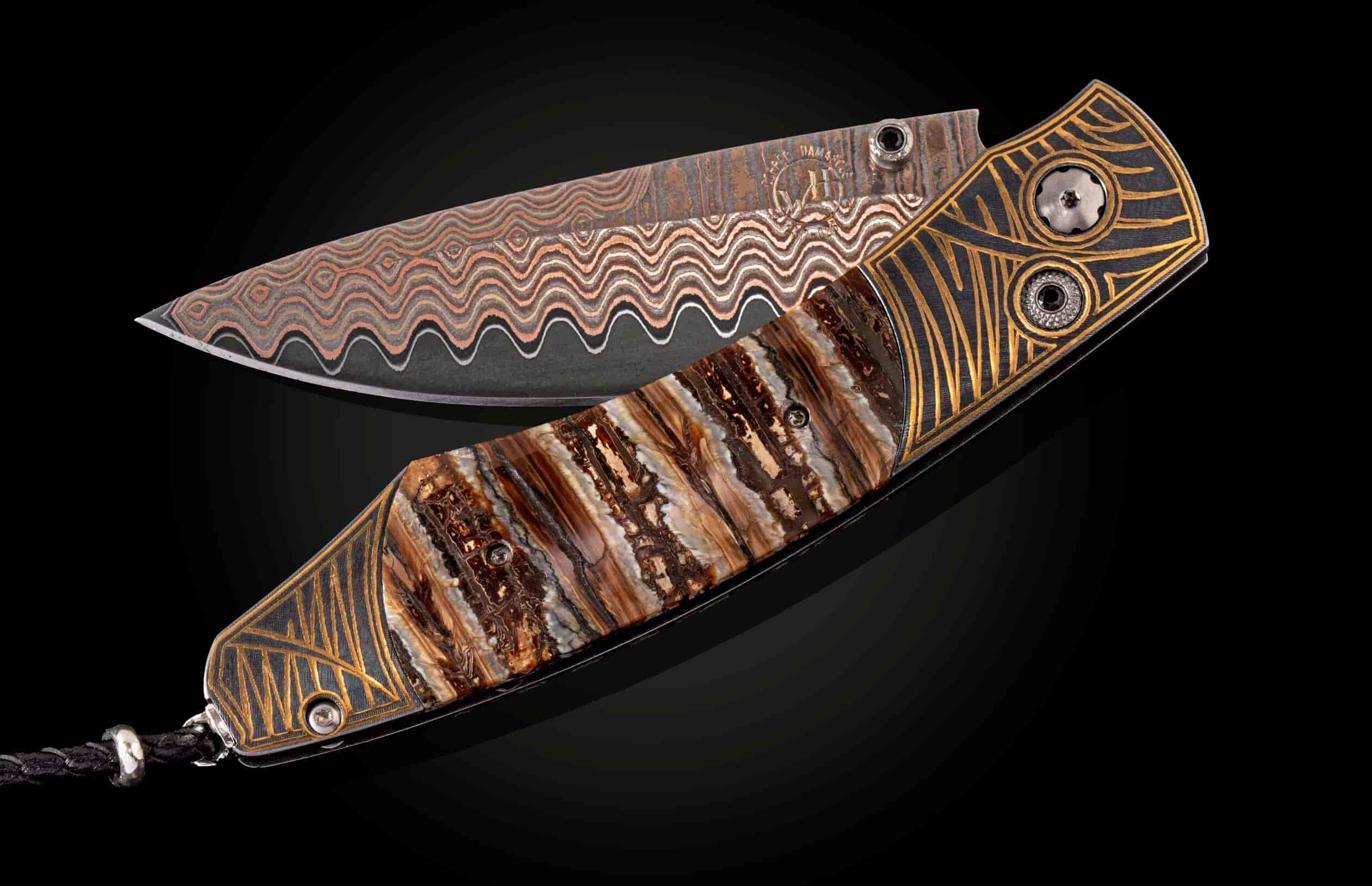Savanna II
Pocketknife with 24K gold koftgari, fossil Mammoth Tooth, and 'copper wave' damascus blade
Product Details
The Spearpoint ‘Savanna II’ features a mesmerizing frame in 24K gold Koftgari (the ancient Indian technique of inlaying gold and/or sterling silver in tool-steel), inlaid with a stunning piece of 10,000 year-old fossil Woolly Mammoth tooth. The blade is William Henry's signature 'Copper Wave' blade with a VG-5 core, and the one-hand button lock and the thumb stud are set with spinel gemstones. A remarkable design that gives you an instrument with a full-size secure grip, and a versatile deep-belly blade, the Spearpoint epitomizes William Henry’s core philosophy – that superlative function deserves to be elevated to superlative art. The ‘Savanna II’ features some of the most exotic materials, artistry and forged metals that are the hallmark of William Henry's collections; a timeless heirloom to be proudly worn and used for a lifetime before being handed-down to another generation.
Product SKU: B12 SAVANNA II
Features & Specs
- One-hand button lock system
- Leather carrying case
- Shipped in an elegant wood presentation box
- Dimensions:
Blade 3.06" (77.7mm)
Handle 4.13" (104.9.5mm)
Overall open 7.19" (182.6mm)






